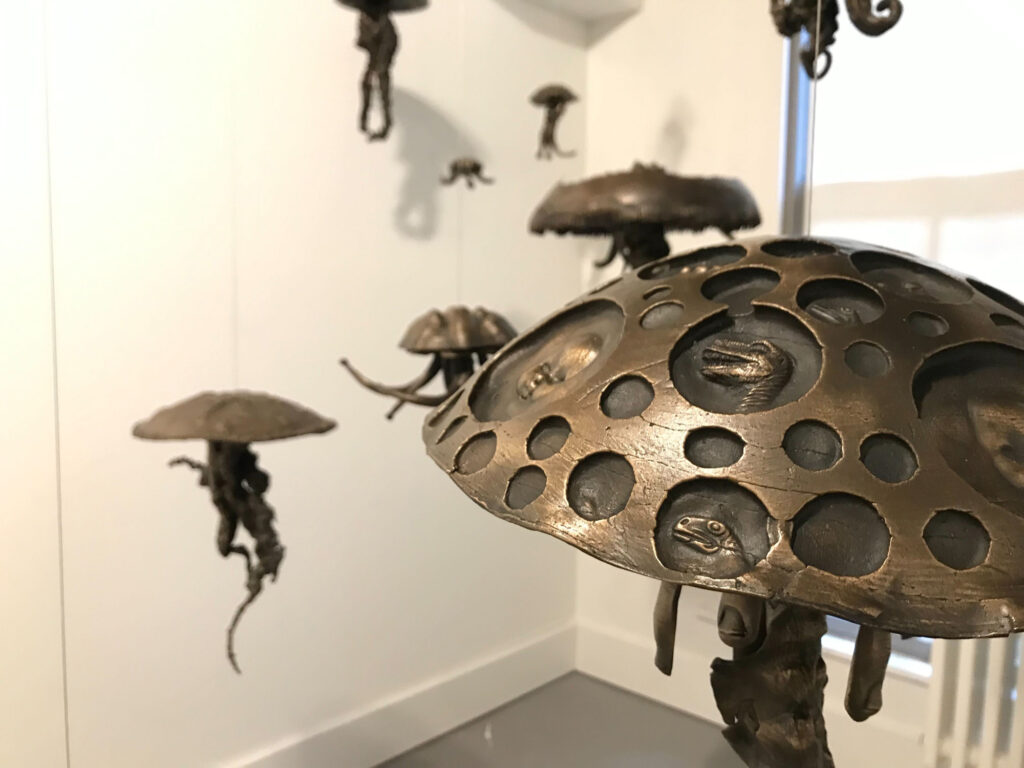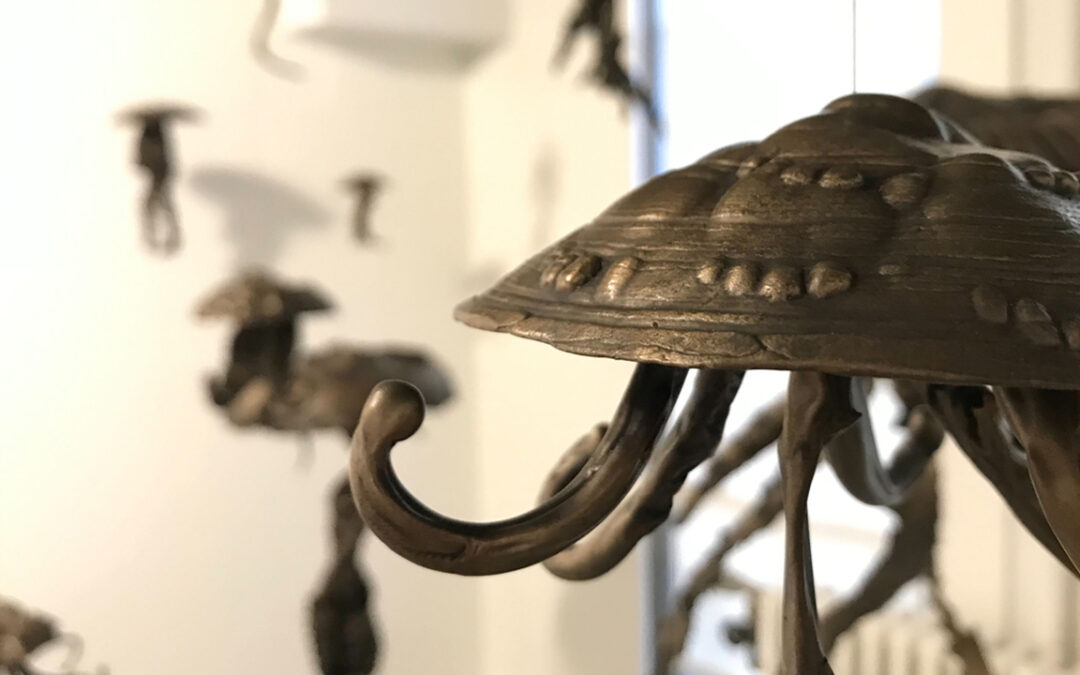Earlier this month, we were thrilled to welcome the community to our newest museum exhibition, Under Water Street. The name is an obvious allusion to the underwater lifeforms and imagery in this installation of bronze sculpture by local artist David Eisenhour. But it also speaks to the space where museum visitors can see this show through July.
Planned and executed by curators Ann Welch and Suzanne Lamon, the installation is intended to mimic an intertidal zone around the walls with a bloom of jellyfish at the back of the gallery. As part of 1892 Historic City Hall, the gallery space itself functioned as the women’s jail from 1892 to the 1940s. As a discrete and intimate exhibition space, it’s become an exciting part of our museum experience.
In recent years, many local artists have leveraged our downstairs gallery space to introduce new work, experiment with site-specific installations, and sometimes even present work that’s rarely been seen. Under Water Street is yet another example of the power of this gallery. It certainly lends itself to the close, contemplative examination Eisenhour’s work deserves. But beyond that, its location in the basement level of our museum places it in an appropriate context for the concept of this show. It’s below the tide level and just across the street from the tidelines of Port Townsend Bay.
At our April 1 opening for Under Water Street, Eisenhour invited museum visitors to consider this: When our oceans rise to or above forecasted levels as our planet continues to warm, the sea water of Port Townsend Bay could someday be flowing through the gallery. This is a big reason Eisenhour continues to make work that reflects on our neighbors of the sea. By calling our attention to the natural environment, we look more closely and connect with some of the issues we all—limpet and otherwise—must face in living on this small, yet vast and ever-changing planet.
Some of the jellyfish pieces in Under Water Street have otherworldly stamped and textured surfaces, which is meant to speak to the impact of human activity on our oceans. You might wonder: Why jellyfish? They’re considered an indicator species—meaning changes in their populations are correlated with greater environmental changes.
Right now, jellyfish are thriving all over the globe. Because they can live in areas with low oxygen levels, jellyfish population increase is often linked to biodiversity losses and ecological disturbances. Overfishing of their natural predators and rising temperatures and acidity in our oceans are thought to be the biggest contributors to the present population surge. The bloom of jellyfish in the gallery allows visitors to not just imagine, but actually visualize some of the implications of rising sea levels.


In recent years, we’ve welcomed interdisciplinary exhibitions like Under Water Street to our museum because we delight in offering surprising experiences that make visitors curious, empathetic, and inspired to see the world around us differently. Artists like David Eisenhour help us do that.
Work like Eisenhour’s brings complex and obscure concepts and stories to life on a sensory level—allowing us to see connections through history, science, art, geography, and other avenues of thought that can remove barriers and help us move forward as a community of people who care.
Reflecting on the inspiration he draws from oceanic lifeforms for a 2014 exhibition at the Bainbridge Island Museum of Art, Eisenhour said:
The recognition of the patterns of life that I see triggers a feeling of belonging to something grand. I want to convey these feelings through my work. Inspired by the patterns on the surface of organic material I have placed under my microscope, I’ve developed methods of texture that honor their complexity.
We invite you to see Eisenhour’s “methods of texture” for yourself—to walk under Water Street, look closely, and maybe even see the tide just outside our doors a little differently. With exhibitions like Under Water Street, we hope our museum experience leaves visitors with some of that “feeling of belonging to something grand.”
Under Water Street will be on view at the Jefferson Museum through July 30 and don’t miss our upcoming artist talk featuring David Eisenhour, Stephen Yates, and Joan Jonland! Join them at the museum Saturday, April 22 at 7:00 PM to hear about the inspiration they draw from the natural world and how they approach creating artwork that reflects it. Capacity is limited, so save your spot for this program while there’s space!
If you love exhibitions that plumb a variety of topics and artforms to tell larger stories, check out recordings from these past exhibition programs:
- Juxtapositions Panel Discussion with Julie Feferman-Perez, Stephen Yates, and Greg Robinson (October 2022)
- Anthropocene Artist Talk with Karen Lené Rudd (August 2022)
- Communicating Climate Change Through Art, Science, and Education with Maria Coryell-Martin, Katie Morrison, and George Divoky (October 2021)

